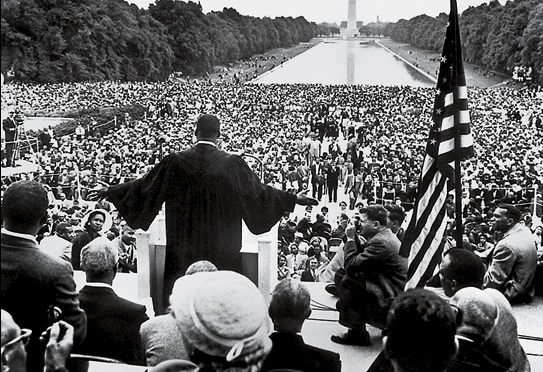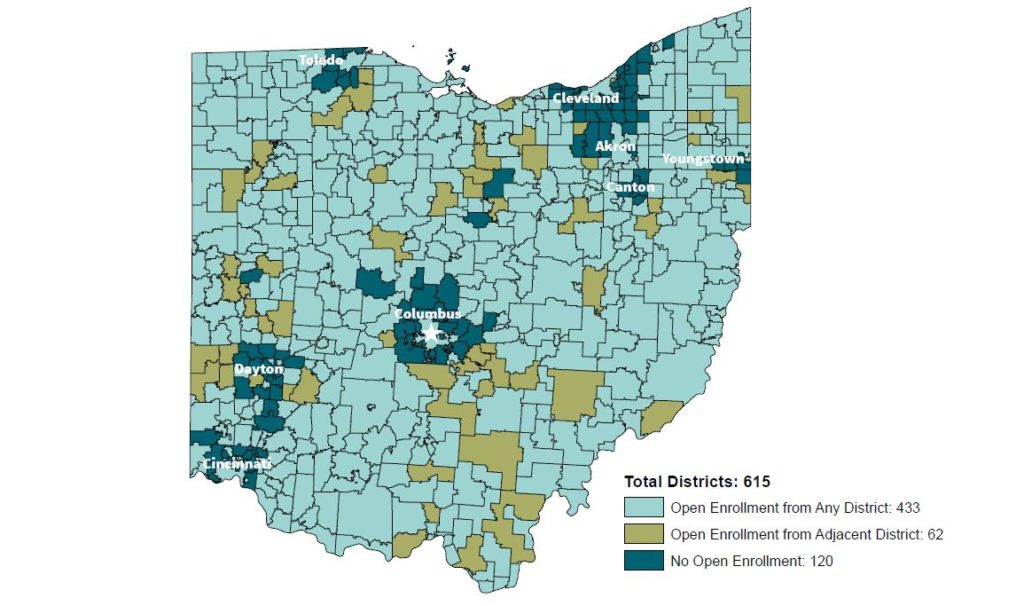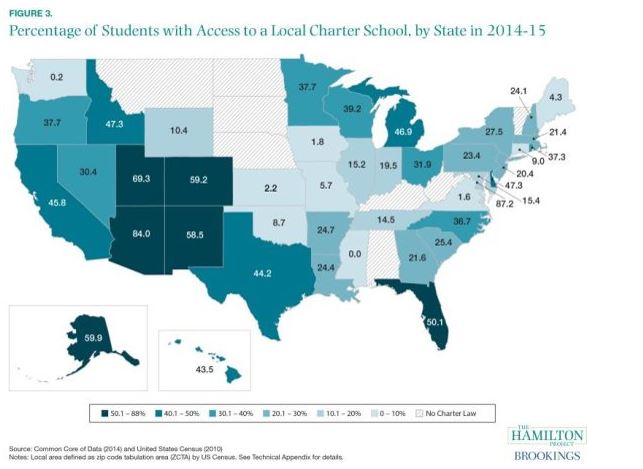
Decades after Brown v. Board of Education, a map generated by the Thomas B. Fordham Institute indicates we have miles to go regarding school integration.
The map displays 615 Ohio school districts, using color coding to show those that allow open enrollment from any district; those that allow open enrolment from an adjacent district; and those that allow no open enrollment at all. A very disturbing pattern of segregation emerges as it becomes clear that each of Ohio’s large urban districts is surrounded by districts that choose not to give students the opportunity to attend their schools. 
(Keep this map in mind the next time you hear someone claim that “school districts take everyone.” Districts take every child who can afford to live in their attendance zones, which is not the same thing as “everyone.”)
Ohio is not likely a stark outlier nationally, but it is very different than my home state of Arizona, where almost all districts participate in open enrollment – including fancy suburban districts like Scottsdale. Ohio, in line with the nation, has posted flat results on the National Assessment of Educational Progress, whereas Arizona is one of two states that have made statistically significant gains on all six exams since 2009.
Another map, this one from the Brookings Institution Hamilton project, suggests why Ohio and Arizona are so different, and where Florida stands. This map measures the percentage of students who had access to one or more charter schools in their Zip code in 2014-15.
Arizona had the highest percentage in the nation of students with a charter school operating in their Zip code: 84 percent, which is more than two-and-a-half times higher than Ohio’s 31.9 percent. Ohio has choice options, but they are overwhelmingly clustered in urban areas, thus providing limited incentive for suburban districts to participate in open enrollment. Arizona has the highest percentage of charter school students in the country, but open enrollment students outnumber charter school students approximately two to one. One of the great contributions of Arizona’s charter and private choice policies has been to create an incentive for districts to participate in open enrollment.
Florida’s choice options, meanwhile, are more inclusive and diverse across community types than Ohio’s, and less so than Arizona’s. In 2014-15, just more than half of Florida students had one or more charter schools operating in their Zip code. Florida’s private choice programs focus on low-income families and children with disabilities. Low-income students are concentrated in large urban districts, but they are present in every district in the state, as are children with disabilities. Florida also has taken steps to increase open enrollment. This should be strongly encouraged, but in the end, incentives carry greater power than laws.
A great and counter-intuitive irony is at work here. The charter and private choice movement has been very focused on students in large urban districts. There are compelling moral reasons for this, but it may not have represented the optimal strategy for helping urban students. Urban students absolutely need access to charter and private schools, and they need it more than others. Urban students should however be able to attend suburban district schools as well through open enrollment. Only broad choice policies will incentivize districts to participate. Thus, urban students will be best served when all community types participate in choice.
The attempt to force district integration through forced busing during the 1970s caused no end of grief and ultimately ended in well-intentioned failure. Forcing families to bus their children across large distances based upon their race predictably did not go well. Progress can, however, be made through voluntary enrollments and incentives.
Prior to 1995 in Arizona, for instance, students who wished to attend a school in a different district, when allowed to do so, were required to pay tuition. Today, 4,000 students who don’t live within the boundary of Scottsdale Unified attend Scottsdale district schools free of charge. Arizona law merely requires districts to have an open enrollment policy, which could in effect mean, “buy or rent real estate here or get lost.” As a Scottsdale Unified taxpayer, I’d like to flatter myself by thinking my school district lowered the drawbridge over a suburban moat out of the goodness of our hearts. I am confident, however, that the thousands of Scottsdale students attending charter schools had a good deal to do with it.
In the end, our aim must be to increase the opportunity for families to find a school that matches the needs and aspirations of their families. We as a movement have underestimated the complexity of the interactions between different types of choice programs. Attempting to improve urban education with the suburban public schools sitting on the sidelines is akin to fighting with one arm tied behind our backs. The integrationists had a noble goal, but they pursued it with what turned out to be the wrong tools. People respond better to carrots than sticks, incentives rather than force.
The state of the education emergency in our inner cities can only be described as dire, which is exactly why we need to give the maximum opportunity and freedom possible across all types of schooling. Our policies can be configured in such a way as to open the walled gardens of our highest performing public schools and promote integration in the process. But don’t take it from me. The same idea was embedded in the words of the Rev. Dr. Martin Luther King Jr.
“We refuse to believe that the bank of justice is bankrupt. We refuse to believe that there are insufficient funds in the great vaults of opportunity for this nation … When we allow freedom to ring – when we let it ring from every city and every hamlet, from every state and every city, we will be able to speed up that day when all of God’s children, black men and white men, Jews and Gentiles, Protestants and Catholics, will be able to join hands and sing in the words of the old Negro spiritual, “Free at last, Free at last, Great God a-mighty, We are free at last.”
We’ve reached 2019, and throughout the country, urban students still are largely not free to attend suburban district schools. Let’s speed up that day when they will be welcome.



If students in some zip codes need more resources for smaller class sizes, tutoring, before/after care & mentoring, then give them what they need. The state has that power. Moving academically inclined kids to charter and private schools doesn’t help the students who need it most. Help all students and hold all publicly funded schools equally accountable.
FL state policies like HB7055 don’t give parents in lower income neighborhoods the choice to improve their neighborhood schools. These laws force them to choose between a public school farther away or a “school of hope” no-excuse, test prep-intensive charter school. Most other charter schools don’t provide transportation. The state gives lower income families limited options, and offers wealthier families with kids already in private schools $8,000 per child per year tuition assistance. Dr. King would not like his message of justice used to market the “school choice movement.”
https://www.politico.com/states/florida/story/2016/01/martin-luther-king-iii-makes-case-for-tax-credit-scholarships-030142